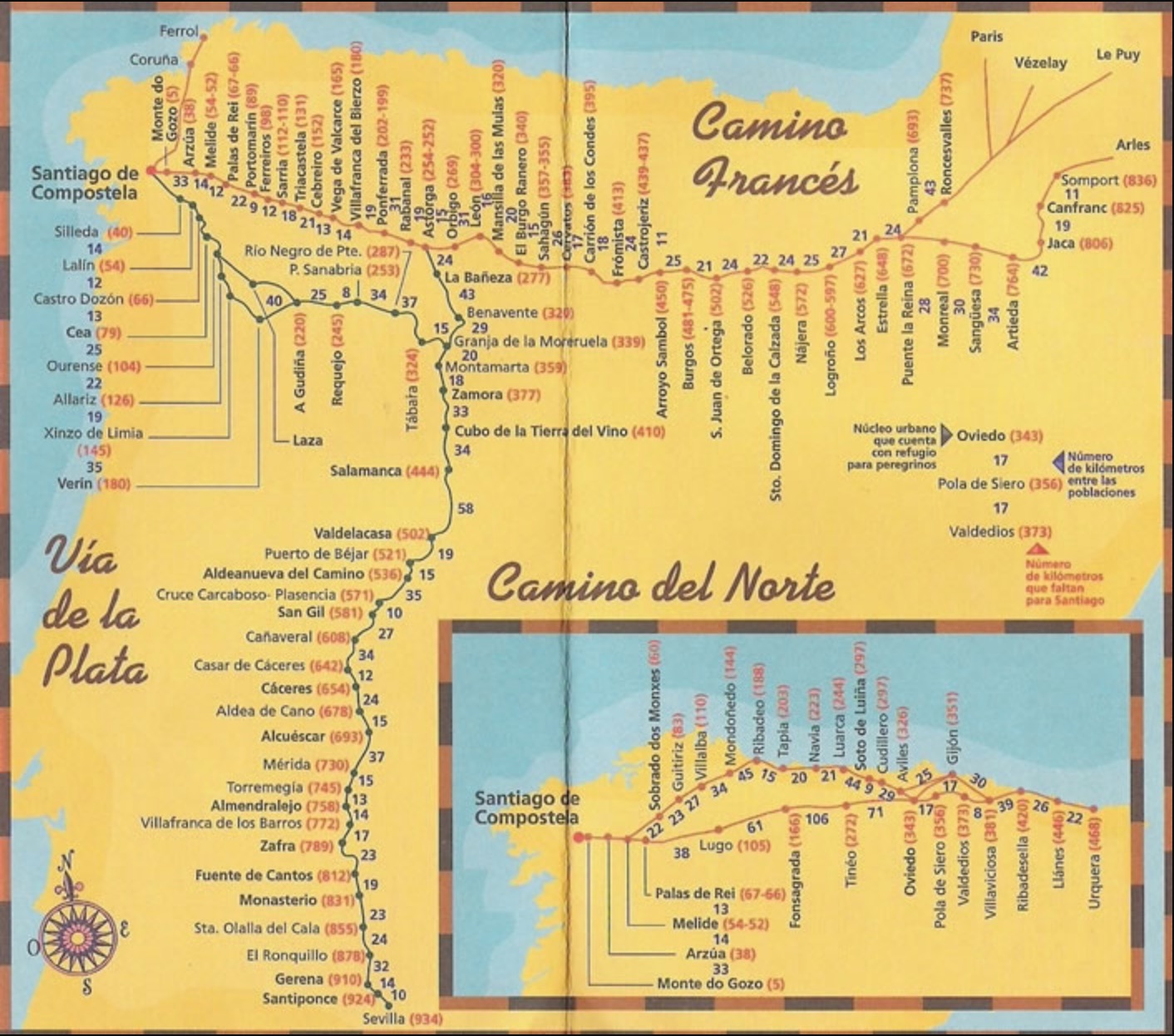Sounds in Pilgrimage
Soundscapes in the Camino de Santiago de Compostela

Unlike the human sound-based pieces I have composed with a focus on mechanical pollution, this piece seeks the sounds of and around spiritual practice. After thinking about what those sounds consist of, and coming to the conclusion that I was only tangentially interested in ritualistic and musical sounds of worship, I arrived at the idea of exploring the incidental sounds of every aspect of a pilgrimage. Sounds of footsteps on gravel, grass, and pavement, sounds of different forest textures, townspeople, pilgrims, streets, temples, cattle, vehicles passing by… these are sounds that become imprinted, ingrained in pilgrims on any pilgrimage, whether Dharamshala, Jerusalem, or Santiago de Compostela.
This 31’ excerpt consists of collages from two days (days 2 and 6) out of nine of soundscape recordings in the Camino de Santiago pilgrimage. The destination points for those two days were Roncesvalles and Estella, in the Basque region of Spain. The recordings were made as frequently as possible at every change in the soundscape, throughout the average 12.5 miles per day. Considering the amount of recorded material, the format of the piece spans from single radio, podcast or concert pieces (featuring each day of recording) to an installation (featuring the entire nine-day collages).
In the excerpt here presented, several kinds recurrent soundscapes reappear at different periodicities. The rhythms of events in the piece are a scaled down rendition of the rhythms of the pilgrimage. In this sense, the form of the piece is analogous to the events in the pilgrimage. As the pilgrim experiences events in cycles –rain, sun, forests, songs, roads, healing, temples, winds, epiphanies, music, livestock, bells, etc.–, so does the listener of these soundscapes in the piece. Processing is reserved for the flat lines, term borrowed from R. Murray Schafer to describe mechanical sounds that are prolonged and unchanging, graphically represented as a horizontal line. These sounds are exclusive to post-industrial revolution mechanical sounds. Their presence after days of walking in rural and natural paths is powerful and pervasive, and may be experienced like a simultaneously pleasurable and disgusting hallucination.
Sounds in Pilgrimage was realized with the support of the Institute of Humanities and Global Cultures (IHGC), through the Buckner W. Clay award in the humanities.
Día 2–Roncesvalles_Día 6–Estella